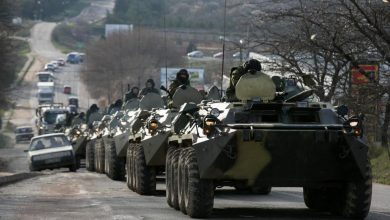
The indictment of 13 Russians charged with attempting to manipulate American voters using social media shines a fascinating light on a sophisticated, relentless operation to exploit the internet for political gain. Here’s how US investigators say the Russians did it.
It was 2014, and in a building in St Petersburg, the Russian Internet Research Agency (IRA) was already hard at work building its arsenal to take on US politics.
According to US prosecutors, the IRA had gathered stolen identities of real Americans, and a formidable encyclopaedia of what “works” on social media when it comes to riling up Americans talking about politics. Two members of the agency were said to have travelled to the US to gather more intelligence, a fact-finding tour taking in nine states, according to investigators.
Back on Russian soil, the IRA began posing online as US volunteers in order to gather tips on how to effectively target voters. One real volunteer, based in Texas, told the Russians to aim for the “purple states” – those where the race was going to be tighter. And so they did, prosecutors say.
By 2016, operations had ramped up as the presidential election drew near. The IRA is alleged to have had a budget of more than a million dollars, and the US now claims they used it to buy advertising on sites such as Twitter and Facebook.
“Hillary Clinton doesn’t deserve the black vote!” read one, posted in May 2016.
“Trump is our only hope for a better future!” read another just under a month later.
The intent was to create an atmosphere of division and anger online. The Kremlin, the indictment says, wanted instability in America. It wanted to sway some people’s vote, and for others, particularly minorities, persuade them not to vote at all.
Moscow vociferously denies meddling in the US vote and called the allegations “absurd”.
The indictment says that the IRA controlled an Instagram account called “Woke Blacks”.
“A particular hype and hatred for Trump is misleading the people and forcing Blacks to vote Hillary,” one message, posted by the account in October 2017, declared.
“We cannot resort to the lesser of two devils. Then we’d surely be better off without voting AT ALL.”
Round-the-clock work
Prosecutors said Russian operatives would work shifts to make sure their posting times matched the timezone of the area they were pretending to be based.
But the work was round-the-clock. When the operatives – they called themselves “specialists” – weren’t posting, they were learning and getting feedback on writing style. They were said to be constantly monitoring the viral success of their approach, tweaking and adjusting to maximise retweets and the spread of the message. The team is also said to have had a list of US public holidays, and appropriate content ready to go so they would blend in.
According to court documents, the IRA took several measures to hide its tracks, duping the technology companies who were unaware, or unable, to stop what was filtering through their systems.
The key – and obvious – move was to hide the fact that these posts were coming from Russia. For that, the IRA is said to have used several Virtual Private Networks – VPNs – to route their operations through computers in the US. The operatives allegedly used stolen identities to set up PayPal accounts using real American names.
The indictment outlines a campaign so effective at reaching American voters, US businesses began paying the Russians to run promotional material. The IRA would charge the businesses – presumably unaware who was behind the account – between $25-$50 per post.
From the web to the streets
It wasn’t difficult to transfer this online anger into real life displays on American streets.
From their desks in St Petersburg, and using fake American personas such as enthusiastic volunteer “Matt Skiber”, the Russian operatives are alleged to have orchestrated real-life protests and demonstrations.
In one, a person dressed as Hillary Clinton in prison attire stood inside a purpose-built cage on the back of a flatbed truck, investigators say.
The IRA is said to have paid for advertisements on Facebook that pushed rallies in the “purple” states it had been advised to target by the volunteer on the ground in Texas.
Once Mr Trump was elected, investigators said the IRA moved to sow more discontent. It pushed two conflicting demonstrations in New York, one in support of the new president-elect and another bearing the message “Trump is NOT my President”.
In the process, the IRA is said to have built up a list of more than 100 real Americans who it had contacted for help in organising these real-world efforts – none of them aware they were puppets in a most audacious Russian campaign. A campaign that, as far as we know, is very much ongoing.
Source: BBC




